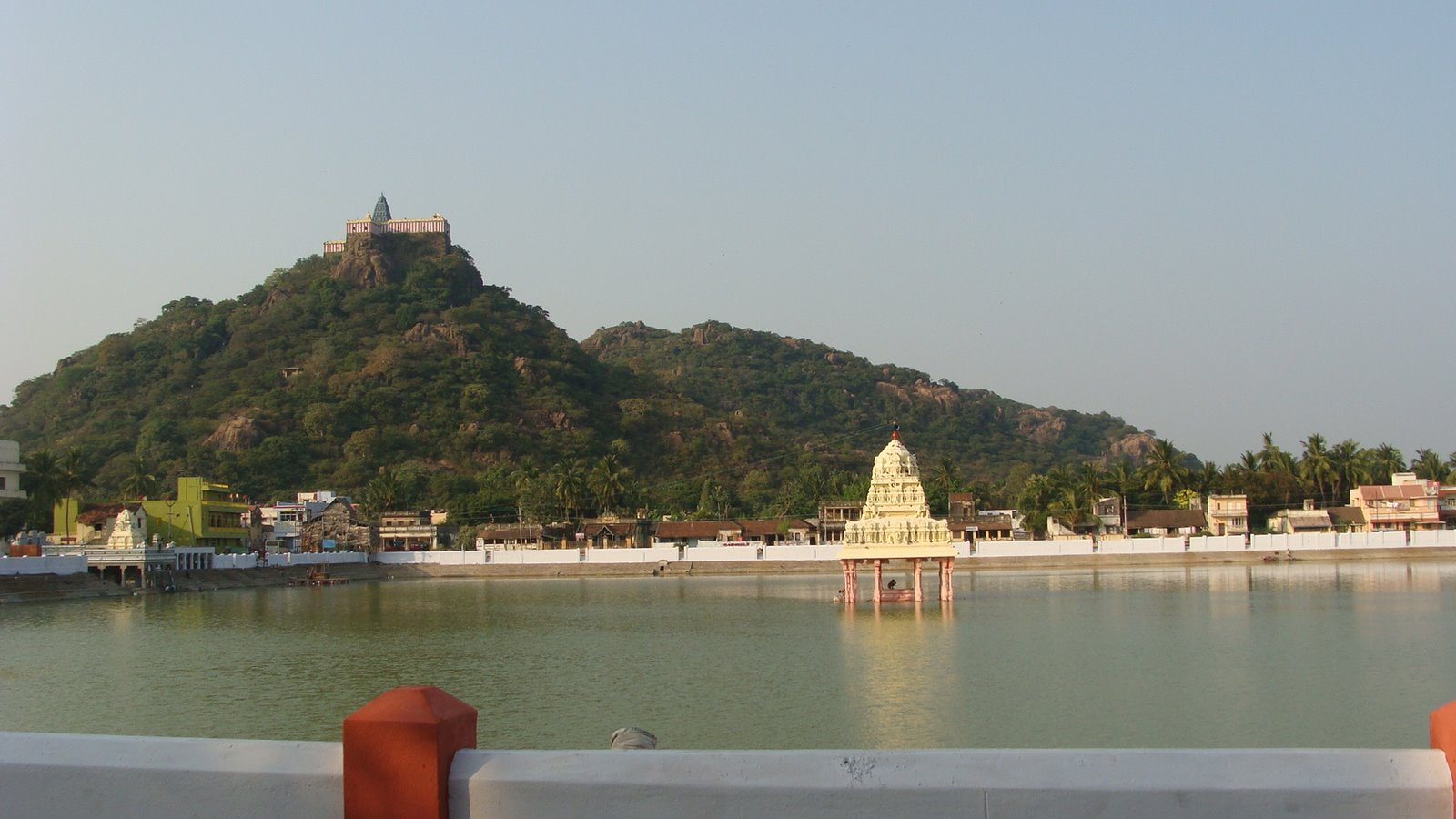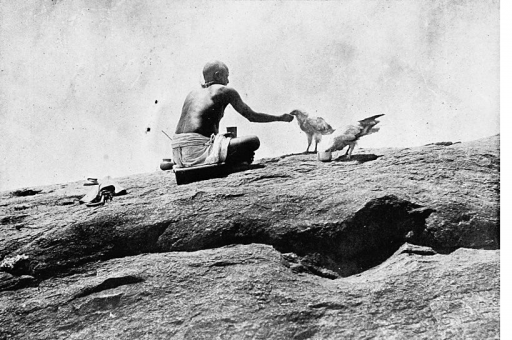Commonly known as Pakshi Thirtham and Dakshina Kailasam it is one of the most well known sites of religious importance in Tamil Nadu. It is situated at a distance of 17 km west of Mahabalipuram. There is a hillock here at about 500 feet and the hill covers an area of 265 acres. The hillock is named as Vedagiri, since it is traditionally believed that the four (Rig,Yajur, Sama and Atharvana) Vedas are seen one above the other in the form of four rocks. Lord Shiva is believed to be emerging from the head of the fourth (Atharvana) Veda and said to have derived the name Vedagiriswarar(a suayambu lingam), the presiding deity of the temple situated on the hilltop. The absence of a Nandi before the presiding deity on the hilltop is a unique feature of this temple. After worshipping the Siddharti Vinayaka and Aiyappa, one can reach the temple by ascending 562 well-laid stone slabs (steps).
Thirukazhukundram is traditionally rich in history and spirituality. According to a legend the `sacred kazhugu’ would regain its original form and attain moksha (salvation) at the end of Kali Yuga. Hence this place is named `Tirukazhu(gu)kundram’ (the hill of sacred eagles) and also Pakshi Thirtham (in Sanskrit), meaning “water made holy by the visit of the birds”.
After descending a few steps on the eastern side, a monolithic cave-temple is seen. This mandapam is full of rare sculptures and belongs to the Mamalla period (A.D. 610-640). There are two verandahs in the cave, each being supported by four massive pillars. There is a huge lingam with figures of Brahma and Vishnu on either side and is found in the upper verandah while in the lower one, there are two life-size statues decorated with ornaments. The peculiarity is that the whole mandapam with sculptures is made out of a single rock and thus this cave is known as Orukkal Mandapam.
On the eastern side, at the foot of the hill, there is a small shrine Nalvar Koil, from where the four Tamil saints (Appar, Sundarar, Sambandar and Manickavasagar) had darshan of Vedagiriswarar who has been praised in the songs and verses of these four great Tamil saints. The Consort of Vedagiriswarar is not seen on the hilltop. She is enshrined in the temple of Bakthavatsaleswarar which is situated at the centre of the town. The temple has four gopurams (towers), the tallest with nine tiers (on the southern side) and the other three with seven tiers.
History:
According to a legend, sage Pusha and sage Vidhadha were cursed by Lord Siva to become eagles, for some offense. It is believed that they are the two eagles that visit Thirukazhukundram daily from time immemorial, in order to worship Siva and to obtain salvation from His curse. It is said that after a bath in the Ganges in the morning, they come here at noon for food, reach Rameswaram in the evening for darshan and return to Chidambaram for the night. The eagles circle around the temple top and approach the priest. They eat the balls of rice and after cleaning their beaks in the water kept in a small vessel nearby, take off, circle around the tower again and fly off. This has been going on for centuries now. The scene is also sculpted on one of the walls in front of Goddess Tirupurasundari, in the lower temple. The two sacred eagles appearing over the temple to worship the Lord every day are a major attraction for the devotees. While these sacred Eagles were known as Sandan & Prasandan in Thretha Yuga, Sambathi & Jadayu in Krutha Yuga, Sambhukthan & Mukundan in Dhawapara Yuga, in Kali Yuga they are now known as Pusha & Vidhadha.
This Lord has been workshipped by Indra, Thilothamai, a dancer of Indra’s court, Garuda, the vehicle of Lord Vishnu, Ashtavasus and many more Rudras. It is believed that Indira is still worshipping Lord in this temple. As an evidence of this fact, thunder falls through a hole in the tower above the sanctum sanctorum (Vimana) and goes around the Shivalinga. Unbearable heat is experienced while opening the sanctum next day. This happens once in a few years. Scientists had proved that such an incident took place on the 10th November, 1930.
There exists in the town a big tank known as SANGU THEERTHAM. It is an extensive tank of 1,000 square yards area, with wide steps on all sides. It is believed that Saint Markandeya, came down here after visiting Benares. He wished to have a bath in the sacred tank and perform abhishekam to the Siva linga here but he could not find any vessel to perform abhishekam. Just then a conch suddenly emerged from the tank, with a humming sound, and Markandeya performed the abhishekam. It is said that even now once in 12 years, a conch emerges from this water, which the temple authorities collect with all honours and preserve in the temple.
There is a collection of about 1,000 conches in this temple, with which, abhishekam is performed to Lord Vedagiriswarar on the last Monday in the Tamil month of Karthigai. According to the sthalapuranam, Lord Siva Himself had declared this tank to be the holiest of all, and as per His command, all the sacred waters in India would meet here once in 12 years when Guru (Jupiter) enters Kanya rasi. The event is conducted as a festival known as Sangu Thirtha Pushkara Mela when there is a huge gathering from all parts of the country.
Festivals:
The Laksha deepam festival is celebrated once in twelve years when a conch inside the Sanku Tirtham floats up. On this occasion one lakh lamps are lit in both the temples (Hill top and lower Bakthavatchalaeswarar ).
- Chithirai festival drawing huge devotee crowd in April-May.
- Aadi Pooram 10 day festival for Mother Ambica in July-August.Full moon days.new moon days.pradosha days.
- Tamil and English New Year Days, Deepavali, Pongal are the festivals celebrated in the day. Special abishek and aaradhanas are performed during these days.
- Next to Tiruvannamalai, Girivalam is observed by devotees here too on full moon days. Lakhs of people join the event. It is said that the Girivalam practice was in vogue in this temple even before it began in Tiruvannamalai.


